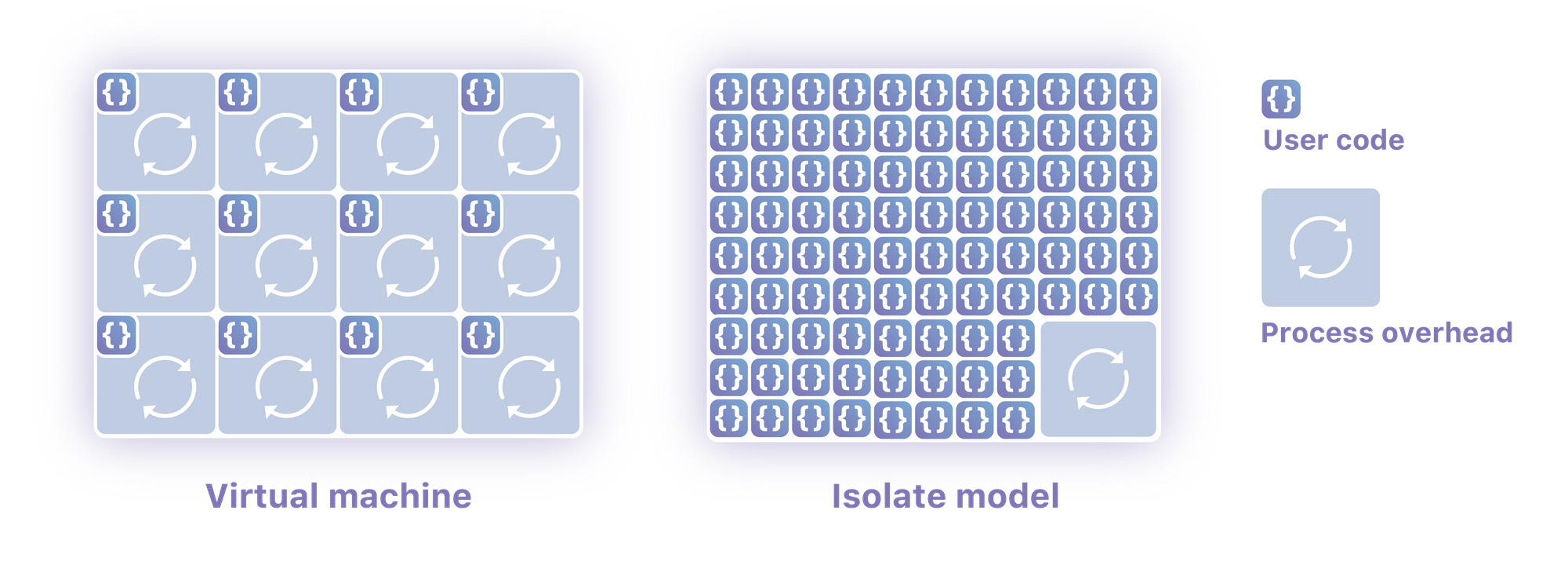Cable Companies Eye Dish’s Greenfield 5G Network
 Dish says it is building a neutral-host 5G network that customers can rent space on to deliver different types of services.
Dish says it is building a neutral-host 5G network that customers can rent space on to deliver different types of services.
SDxCentral’s Weekly Roundup — November 9, 2018
 Docker containerizes Windows Server 2008; Rumors fly that Thoma Bravo will buy Symantec; CommScope buys Arris.
Docker containerizes Windows Server 2008; Rumors fly that Thoma Bravo will buy Symantec; CommScope buys Arris.
Cisco, Huawei Among Alef Mobitech Edge Platform Test Partners
 The software-based platform is focused on mobility network functions needed to interconnect any edge application without any upgrades to the underlying network or origin cloud.
The software-based platform is focused on mobility network functions needed to interconnect any edge application without any upgrades to the underlying network or origin cloud.
Weekly Show 415: Gluware’s Brownfield Automation For Big Pharma (Sponsored)
Gluware sponsors today's Weekly Show podcast and brings along a Big Pharma customer to talk about network automation in a brownfield production network. We dive into making network automation work in real life.
The post Weekly Show 415: Gluware’s Brownfield Automation For Big Pharma (Sponsored) appeared first on Packet Pushers.
Stuff The Internet Says On Scalability For November 9th, 2018
Wake up! It's HighScalability time:
Do you like this sort of Stuff? Please support me on Patreon. I'd really appreciate it. Know anyone looking for a simple book explaining the cloud? Then please recommend my well reviewed (30 reviews on Amazon and 72 on Goodreads!) book: Explain the Cloud Like I'm 10. They'll love it and you'll be their hero forever.
- $3 billion: Tesla's yearly spend on gigafactories; 18,000: GDPR data breach notifications since May; 30: happy birthday Morris Worm!; 1/3: not opting for new Java; 10x: MySQL TPS improvement in 9 years; 1,300: childhood photos posted by parents by the time they're 13; 100TB: hard drives by 2025; 1000x: faster graphics performance than the original iPad released eight years ago; 13.28B: transistors in world's first 7nm GPU; 15 million: daily Uber trips; $725 million: opening weekend for Redemption 2;
- Quotable Quotes:
- @kylecyuan: 10/ From computational bio, cloud bio, and digital therapeutics, AI has put Bio on the Moore's Law curve, not Eroom's Law. From wet lab problems to dry lab ones. @vijaypande 's "When Software Eats Bio." This industrializes and Continue reading
Last Month in Internet Intelligence: October 2018

The level of significant Internet disruptions observed through the Oracle Internet Intelligence Map was lower in October, though the underlying reasons for these disruptions remained generally consistent compared to prior months. For enterprises, the importance of redundant Internet connectivity and regularly exercised failover plans is clear. Unfortunately, for state-imposed Internet outages, such planning and best practices may need to include failsafes for operations while periodically offline.
Directed disconnection
On October 10, Ethiopian Prime Minister Abiy Ahmed met with several hundred soldiers who had marched on his office to demand increased pay. The Ethiopian Broadcasting Corporation (formerly known as ETV) did not cover the soldiers marching but noted that Internet connectivity within the country had been shut off for several hours to prevent “fake news” from circulating on social media. This aligned with residents’ reports of a three-hour Internet outage. The figure below shows that the disruption began around 12:00 GMT, significantly impacting both traceroutes to, and DNS query traffic from, Ethiopia for several hours.

The impact of the Internet shutdown is also clearly evident in the figure below, which shows traceroutes into Ethio Telecom, the state-owned telecommunications service provider. Similar to the country-level graph shown above, the number of Continue reading
ForeScout Buys SecurityMatters for $113 to Expand Network Protection
 The Netherlands-based startup provides device visibility, continuous network monitoring, and threat and anomaly detection specific to operational technology and industrial environments.
The Netherlands-based startup provides device visibility, continuous network monitoring, and threat and anomaly detection specific to operational technology and industrial environments.
Short Take – Thinking Differently
We’ve all heard the Apple Slogan “Think Different” but is that something we actually do? In this Network Collective Short Take, Russ and Eyvonne explore this idea of thinking differently and how our thought process impacts the work that we do.
The post Short Take – Thinking Differently appeared first on Network Collective.
Making the Case for Community Networks at Africa IGF

Who supplies your Internet? If you live in urban Africa, you probably get Internet access through your mobile phone or through fibre at the office or home. When you travel to rural or underserved areas, there is probably limited or no Internet because mobile network operators and Internet Service Providers (ISPs) have yet to reach these areas. But what if people in rural and underserved areas could build their own networks to provide the telecommunications services that they need?
This notion has been tried successfully in several African countries. In Kenya, Tunapanda Institute has built TunapandaNET a wireless network connecting schools and youth centres in Kibera, Kenya’s largest slum. Bosco is a solar-powered wireless network that connects community ICT centres in Gulu, Northern Uganda. PamojaNet operates a wireless network to the community in Idjwi Island on lake Kivu, Eastern DRC, close to the border with Rwanda. Others such as Machaworks in rural Zambia and Zenzeleni Networks in Eastern Cape of South Africa provide similar services. These networks have been built by local communities to provide access to both offline content and Internet access where possible to the communities that they serve.
During a session at the 2018 Africa Internet Governance Continue reading
Cloud Computing without Containers

Cloudflare has a cloud computing platform called Workers. Unlike essentially every other cloud computing platform I know of, it doesn’t use containers or virtual machines. We believe that is the future of Serverless and cloud computing in general, and I’ll try to convince you why.
Isolates

Two years ago we had a problem. We were limited in how many features and options we could build in-house, we needed a way for customers to be able to build for themselves. We set out to find a way to let people write code on our servers deployed around the world (we had a little over a hundred data centers then, 155 as of this writing). Our system needed to run untrusted code securely, with low overhead. We sit in front of ten million sites and process millions and millions of requests per second, it also had to run very very quickly.
The Lua we had used previously didn’t run in a sandbox; customers couldn’t write their own code without our supervision. Traditional virtualization and container technologies like Kubernetes would have been exceptionally expensive for everyone involved. Running thousands of Kubernetes pods in a single location would be resource intensive, doing it in Continue reading
Technology Short Take 106
Welcome to Technology Short Take #106! It’s been quite a while (over a month) since the last Tech Short Take, as this one kept getting pushed back. Sorry about that, folks! Hopefully I’ve still managed to find useful and helpful links to include below. Enjoy!
Networking
- Julia Evans provides some Envoy basics. Envoy is a useful project with which to be familiar; it serves as the data plane for the Istio service mesh, and it is the data plane for Heptio’s Contour ingress controller (and, by extension, Heptio’s Gimbal multi-cluster routing solution).
- Continuing on that Envoy theme, you may find this article by Matt Klein—one of the primary authors of Envoy—helpful in understanding some of the concepts behind modern load balancing and proxying. Many of these concepts had direct impacts on the design of Envoy.
Servers/Hardware
- The Intel Management Engine (ME) has received a bit of attention as a potential security vulnerability; in this article, authors Maxim Goryachy and Mark Ermolov expose some new concerns around the Intel ME and its undocumented Manufacturing Mode.
- Serve The Home takes a critical look at the Bloomberg Supermicro stories, debunking or at least calling into question many details of the Continue reading
Performance Testing: WinPcap versus Npcap
In this video, Tony Fortunato tests WinPcap versus Npcap. See which performs better.
Video: SDWAN Reference Design
After explaining the basics of SD-WAN, Pradosh Mohapatra, the author of SD-WAN Overview webinar focused on SDWAN reference network design.
You need at least free ipSpace.net subscription to watch the video.
ApproxJoin: approximate distributed joins
ApproxJoin: approximate distributed joins Le Quoc et al., SoCC’18
GitHub: https://ApproxJoin.github.io
The join is a fundamental data processing operation and has been heavily optimised in relational databases. When you’re working with large volumes of unstructured data though, say with a data processing framework such as Flink or Spark, joins become distributed and much more expensive. One of the reasons for this is the amount of data that needs to be moved over the network. In many use cases, approximate results would be acceptable, and as we’ve seen before, likely much faster and cheaper to compute. Approximate computing with joins is tricky though: if you sample datasets before the join you reduce data movement, but also sacrifice up to an order of magnitude in accuracy; if you sample results after the join you don’t save on any data movement and the process is slow.
This paper introduces an approximate distributed join technique, ApproxJoin, which is able to sample before data shuffling without loss of end result accuracy. Compared to unmodified Spark joins with the same sampling ratio it achieves a speedup of 9x while reducing the shuffled data volume by 82x.
The following charts show ApproxJoin’s latency Continue reading
Broadcom Cuts More Than 300 CA Technologies Jobs, Report Says
 Broadcom closed on its $18.9 billion acquisition of CA earlier this week.
Broadcom closed on its $18.9 billion acquisition of CA earlier this week.
